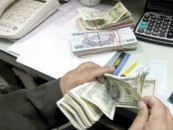Gujarat’s gifts to India and Pakistan
Gujarat gave South Asia both Gandhi and Jinnah. It gave us the only trading class that respects work ethic.

Gujarat’s gifts to India and Pakistan
Aakar, a Gujarati, thinks Pakistan needs pragmatic rather than honour-bound leaders for its survival. He quotes the warlike-Gakhar army chief of Pakistan, General Kayani, as saying: “Pakistan’s honour will not be traded for prosperity.”
Because of him, Pakistan may lose its prosperity and has lost much of its honour because of galloping poverty. In opposition to him, he points as it were, three Pakistanis from the trading class: Pervez Hoodbhoy (Lohana/Khoja), Abdus Sattar Edhi (Lohana/Memon) and Najam Sethi (Punjabi/Khatri). He says: “These three men represent the best of Pakistan.”
I have always held that Indian Gujarat rescued humanity by giving the two economic hearts of South Asia — Mumbai and Karachi — the gift of its trading classes. Gujarat had the only port, Surat, facing westward and bred traders among its Hindu population. Because of commerce, Gujarat became prosperous; it also produced people of pragmatic wisdom. The first real revenue expert of India, Todar Mal, was imported by the Mughal king Akbar from Gujarat. His system was borrowed by the British Raj too.
Gujarat gave South Asia both Gandhi and Jinnah. It gave us the only trading class that respects work ethic. You want to see the difference? In Punjab, there is less trust — as per Francis Fukuyama, the basic trait of the rising state in the West — and a less reliable system of payments than in Karachi where the Memon seth pays up to establish trust. Beware of the Punjabi trader who works on the basis of deferred payments!
Hoodbhoy and Edhi are Lohanas, as was Jinnah. But Najam Sethi may not know what kind of Khatri he is. He is an Oxford-trained economist and puts economy before honour. In Pakistan, the presiding symbolism cannot be missed. Pakistani textbooks lionise the Afghan warrior-king Mahmud Ghaznavi who attacked Gujarat for loot. Pakistan’s most dangerous missile system Hatf-3 targeting India is named ‘Ghaznavi’. Honour-based Pakistan is at odds with commerce-based India.
The word ‘seth’ comes from ‘shreshtha’. It literally means ‘most splendid’ in the Rigved. Over centuries, it became attached to the business community. Now the dictionary says many things. It means ‘wholesale businessman’; it also means ‘banker’. Suffice it to say, it leans more towards finance than commerce.
‘Seth’ has no clearly pejorative nuance in the whole of India, except in Oria, the language of Orissa, where the Sethis have become washermen. At least, this is what my Comparative Dictionary of the Indo-Aryan Languages says. Sethi could have evolved from a variant of respect, ‘seth-ji’, but in India it has one other form: ‘shetia’.
There is a very interesting story about the ‘shetia’ of Bombay by Kathryn Hansen in her book Sarai Reader: The Cities of Everyday Life. In the 19th century, Bombay was dominated by the shetia class comprising Parsis, Bohras and Hindus — all from Gujarat. The ‘Shetia’ supplied credit and transport to the British. In shipping, only one family, the Wadias of Surat in Gujarat, had a monopoly. (A Wadia was to become the son-in-law of Jinnah.)
When the British made military forays into the East, the Shetias of Bombay benefited, and some of them even traded in opium after the East Indian Company lost its monopoly over the China trade. Jinnah’s in-laws, the Petits, were among them. The great Dadabhai Nauroji, whom the Quaid admired, also came from this class.
Published in The Express Tribune, February 24th, 2012.















COMMENTS
Comments are moderated and generally will be posted if they are on-topic and not abusive.
For more information, please see our Comments FAQ